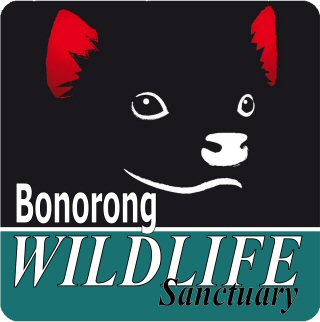Tasmanian wildlife:
Viewing locations, nature information and safer driving tips
Where to see Tasmanian wildlife, free in nature and a wildlife rescue centreAt many places in Tasmania, you can meet orphaned wildlife that has been hand raised, then returned to nature.Meet Slasher, the orphaned wallaby. Slasher is a very lucky boy. Firstly surviving his mother being killed by a car, then the next day almost being turned to mince meat by the roadside grass slasher. Growing up at with humans, he loves meeting guests and a scratch under the chin. In spring, he will be introduced to the outside world and the resident mob, many of who came to us as orphans. This includes Ronnie from the video below. Wildlife Activities near HobartTasmanian Devils
Wildlife rescue Self or guided tours $ Budget Half and full day cruises |
Protecting Tasmanian wildlife: |
Seven Great Short Walks along the Huon Trail
The 60 Great Short Walks offer the best of Tasmania's walking opportunities in National Parks, Forest Reserves and other public land. Whether you want a gentle stroll or a physical challenge; a seaside ramble or a mountain vista; a long day's outing or a short wander, Great Short Walks has plenty for you. The walks are located throughout Tasmania and can generally be accessed from major roads and include a range of environments. Eight of the walks are along the Huon Trail.
7. Fluted Cape
8. Labillardiere Peninsula 9. South Cape Bay 10. Duckhole Lake 11. Lake Esperance 12. Hartz Peak 13. Tahune AirWalk We can also post the brochure to you. Email us to request one, or you can download [PDF 15 MB] the the 60 Great Short Walks brochure here
|
Tasmanian Tiger, Thylacine
Is this iconic creature extinct? Read a selection of comments and opinions:
The thylacine (Thylacinus cynocephalus) is one of the most fabled animals in the world. Yet, despite its fame, it is one of the least understood of Tasmania's native animals. European settlers were puzzled by it, feared it and killed it when they could. After only a century of white settlement the animal had been pushed to the brink of extinction. Read more on the Tasmanian Government website In 1982 a researcher with the Tasmania Parks and Wildlife Service, Hans Naarding, observed what he believed to be a thylacine for three minutes during the night at a site near Arthur River in northwestern Tasmania. In January 1995, a Parks and Wildlife officer reported observing a thylacine in the Pyengana region of northeastern Tasmania in the early hours of the morning. Later searches revealed no trace of the animal. In February 2005 Klaus Emmerichs, a German tourist, claimed to have taken digital photographs of a thylacine he saw near the Lake St Clair National Park, but the authenticity of the photographs has not been established. The photos were not published until April 2006, fourteen months after the sighting. The photographs, which showed only the back of the animal, were said by those who studied them to be inconclusive as evidence of the thylacine's continued existence. Read more on Wikipedia In late 2002 the researchers had some success as they were able to extract replicable DNA from the specimens. On 15 February 2005, the museum announced that it was stopping the project after tests showed the DNA retrieved from the specimens had been too badly degraded to be usable. |
The Forest Debate
The debate about whether Tasmania's forests are harvested for sale as wood products or are protected as entire eco systems has raged for over 30 years. Our Common Ground is about achieving Tasmania's true potential where environmental sustainability underpins economic prosperity. It was established in 2009 by individuals, organisations and businesses from all walks of life and all political persuasions. Our Common Ground believes we can create a sustainable and prosperous Tasmania where we can protect our forests, grow Tasmanian jobs and develop a vibrant timber industry. Our Common Ground is working to end the forestry conflict.
These videos share the thoughts of loggers, politicians and conservationists. |
|
Home
|
Choose
|
Getting to Tasmania
|
Help
|
About Us
|





















